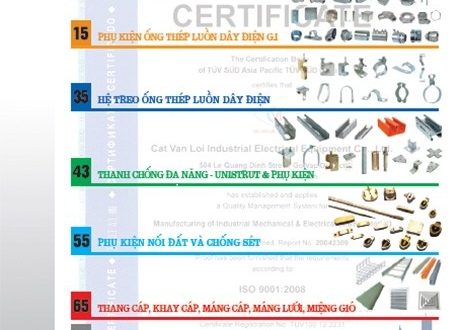RF and Amplifier PCB Design
RF and Amplifier PCB Design
To create a high-performance RF and Amplifier PCB, you need to use 2D and 3D CAD tools. Altium Designer on the Altium 365 platform is an intuitive and comprehensive tool that makes designing complex RF systems easy.
RF signal lines must be separated from high-speed digital signals to avoid coupling. Digital noise (from clocks, PLLs, and other circuits) can link into RF signal pins and cause distorted transmission.
Design Considerations
The RF PCB design process must take into account the potential for spatial interference from high-frequency components. These components are often very sensitive to radiated noise, which can cause demodulation and other problems. A good RF PCB layout will minimize spatial interference by making use of the PCB’s layer stack-up to separate circuits into functional blocks and using ground plane stitching to reduce the distance between components and traces.
Signal traces should be kept as short as possible to avoid excessive capacitive coupling between lines. This can be accomplished by keeping the distance between traces low, and by routing each trace in parallel only when necessary. This is especially important for RF signals, where long lines can lead to significant signal loss due to reflected noise.
It is also important to ensure that RF and Amplifier PCB signal conductors have sufficient width to achieve the target characteristic impedance. This can be done by using a number of calculation tools available online, taking into account the differences in dielectric constant between PCB layers (e.g., an internal FR-4 circuit board layer might have an eR value of 4.2, while the outer substrate pre-preg layer could have an eR value of 3.8).
Finally, RF power and ground lines should be routed on dedicated layers. This will prevent them from cross-coupling with other signal layers and affecting their performance. In addition, adequate bypass capacitors should be installed at the main VCC distribution nodes and VCC branches. These capacitors should be chosen based on the overall frequency response of the RF IC and the expected frequency distribution of digital noise from clocks and PLLs.
Layout Guidelines
Many RF components require controlled impedance transmission lines to transport RF power to (or from) the IC pins. The transmission lines can be implemented on an exterior layer of the PCB, or they may be buried within an internal PCB layer. Regardless of the design, these transmission lines must be properly implemented to provide an appropriate characteristic impedance.
RF transmission line implementation is typically done using a microstrip, suspended stripline, or coplanar waveguide. When designing a PCB to use these technologies, there are a number of important layout guidelines that must be followed. For example, microstrip lines should be kept as short as possible to avoid introducing additional parasitic capacitance. In addition, a ground wire should be avoided under the transmission line, as this can cause the signal to couple into the ground and limit the power it can radiate.
In order to reduce the amount of RF RF and Amplifier PCB Supplier signal that is coupled into the ground, a 5 x 5 via array should be placed in the intermediate ground area on the component layer, just below the RF IC. The vias should be plated with thermal paste to improve heat dissipation.
Another important consideration is to copy the TI reference design for optimum performance. For example, the reference design for the CCXXXX LPRF devices recommends a solid ground plane beneath the device and an RF path. This is a must for any RF board. Also, make sure that any bypassing capacitors are as close as possible to the pins they are meant to decouple.
Material Selection
For RF PCBs, the materials used need to be able to deliver tightly controlled impedances. This is important because RF signals are sensitive and must be transmitted with minimal losses. The choice of materials ranges from lower-cost FR-4 substrates to more expensive polytetrafluoroethylene (PTFE) dielectric materials. In between are a number of high-performance materials that offer good performance-cost ratios.
Substrates also need to have a low coefficient of thermal expansion. The amount that a substrate material expands and contracts with different temperatures can have significant effects on the circuit board’s performance. For instance, RO4350B is an excellent PTFE material, but it has a relatively large CTE. This can cause issues when the RF signal is transferred between layers, as it might induce a significant impedance change in the conductors.
The materials used must also maintain consistent dielectric constants over a wide temperature range. The best PCB materials for RF applications typically have a Dk value between 2 and ten. In addition, the Dk of a substrate is influenced by its outer laminated layers as well. Therefore, it’s important to choose a material that is formulated with consistent dielectric constants in its outer layers. It is also advisable to use a design calculator that takes into account the characteristic impedance of a transmission line, as well as its width and thickness. The calculator should allow you to select the optimal trace width to achieve the desired impedance.
PCB Manufacturer
The manufacturer plays a critical role in the overall success of an RF circuit board. The RF PCB fabrication process is complex, requiring specialized materials and equipment that must be carefully maintained. In addition, the RF circuit boards must be carefully tested to ensure they meet design specifications. The manufacturing company should also be able to respond quickly to a customer’s needs and offer a rapid turnaround for prototype fabrication.
A key factor in RF PCB manufacture is the selection of the right material for the circuit board. Typically, the material used for PCB fabrication is FR-4. This material has a non-uniform dielectric constant and loss tangent, which limits performance parameters. Using a FR-4-free material in an RF circuit board will significantly reduce the impedance of the signal paths and help to prevent reflections and interference.
Another important consideration is the Coefficient of Thermal Expansion (CTE). CTE refers to variations that will occur in a circuit board’s dimensions as it adjusts to different temperatures. Choosing an RF PCB material with low CTE will improve accuracy during drilling and assembly processes and ensure that the traces are properly aligned.
The PCB assembly process starts with the preparation of a Bill of Materials (BOM). A BOM is a list of the components required for a specific project. It is essential to prepare this document carefully, as errors can be expensive and even dangerous for the project. The BOM should include a list of recommended suppliers from which the required components can be purchased. This will ensure that the manufacturer is obtaining high-quality components.



